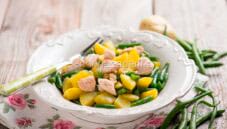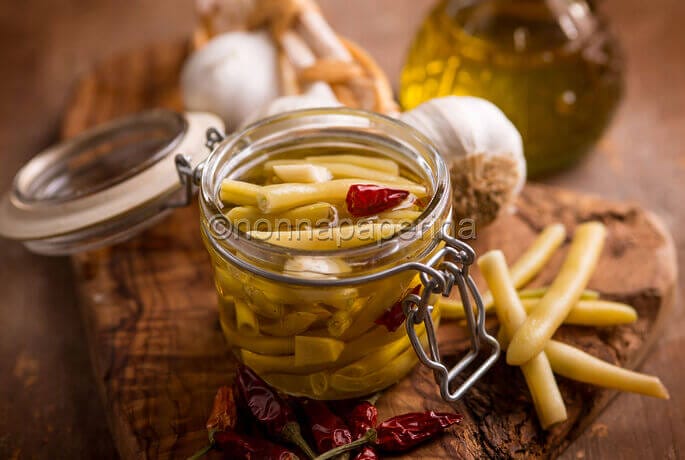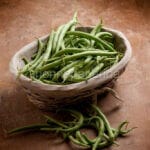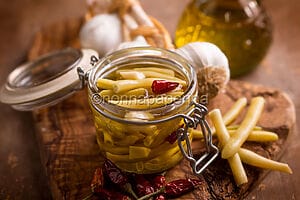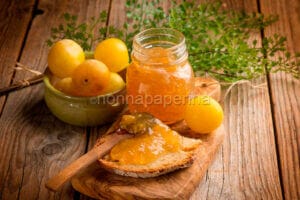
Pickled green beans, a delicious preserve in the pantry
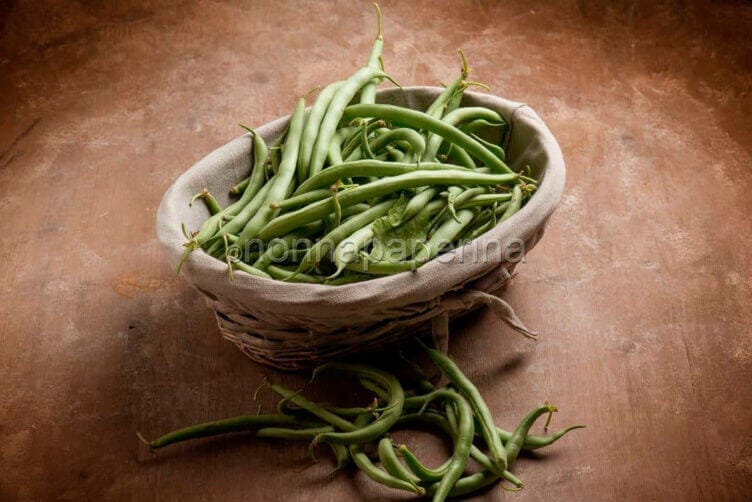
Pickled green beans: a tasty preserve to keep in the kitchen
Pickled green beans to keep in the pantry for the winter. Proper planning of pantry space is necessary so as to avoid some jars remaining on the shelves for years without becoming useful while other products run out quickly and force us to grudgingly resort to the supermarket shelves.
Prior to devoting ourselves to this enjoyable pastime, we should carefully consider the amounts and kinds that need to be maintained in light of our actual needs, preferences, and potential desire to use the fruits of our labours as unique and practical gifts, among other considerations.
The most suitable place for storing fruits and vegetables in jars must be a cool (maximum temperature of 18–20 °C), dry, well-ventilated, and dark environment. Although it would be ideal to have a section of the cellar set aside specifically for this use, enough room can be made even inside an apartment.
On the shelves, the jars will be arranged vertically in groups of similar preserves; furthermore, each will be characterised by a label (let your imagination run wild!) indicating the type of contents, the date of packaging, and, if necessary, the date of possible consumption. Considering that hot air tends to rise, it is better to place the vases on the lower shelves.
Recipe pickled green beans
Preparation pickled green beans
- Clean the green beans by removing the ends, then place them in a saucepan with the water, vinegar, salt, pepper, cloves, and bay leaves.
- Bring everything to a boil and cook for about 20 minutes. Taste them during cooking because they should not be soft but crunchy in the mouth.
- Finally, drain the green beans and leave them to dry on a cloth. Dab them dry.
- Cover everything with oil until you get to about 1 centimetre from the edge, and then seal it tightly.
- Leave it to rest in a cool, dry place for about a month before eating.
Ingredients pickled green beans
- 1 kg. of green beans
- half litre of white vinegar
- half litre of water
- 40 gr. of coarse salt
- 3 cloves
- a few peppercorns
- 1 bay leaf
Useful tools for the preparation of preserves
Let’s look at everything you’ll need in your kitchen to make some delicious preserves. The tools typically found in a well-stocked kitchen will be adequate for processing fruit and vegetables: a blender, scales, graduated glass for measuring liquids, cutting board, food mill, and large stainless steel saucepans (preferably with thick bottoms and handles to aid in the evaporation of water). Sharp knives, potato peelers, ladles, spoons, stainless steel skimmers, and long-handled wooden spatulas must be available. Lastly, items such as tightly woven cloths for filtering juices, spotless tea towels and rags, horsehair sieves, filters, and gauze, as well as ceramic or glass terrines and containers, are helpful.
While copper saucepans can be safely used for making jams, it is best to avoid them (as well as aluminium ones) when cooking with vinegar.
Additionally, you can equip yourself with some contemporary appliances to help with some kitchen tasks, such as juice extractors, mixers, centrifuges, hot air dryers, and tiny autoclaves for sterilisation.
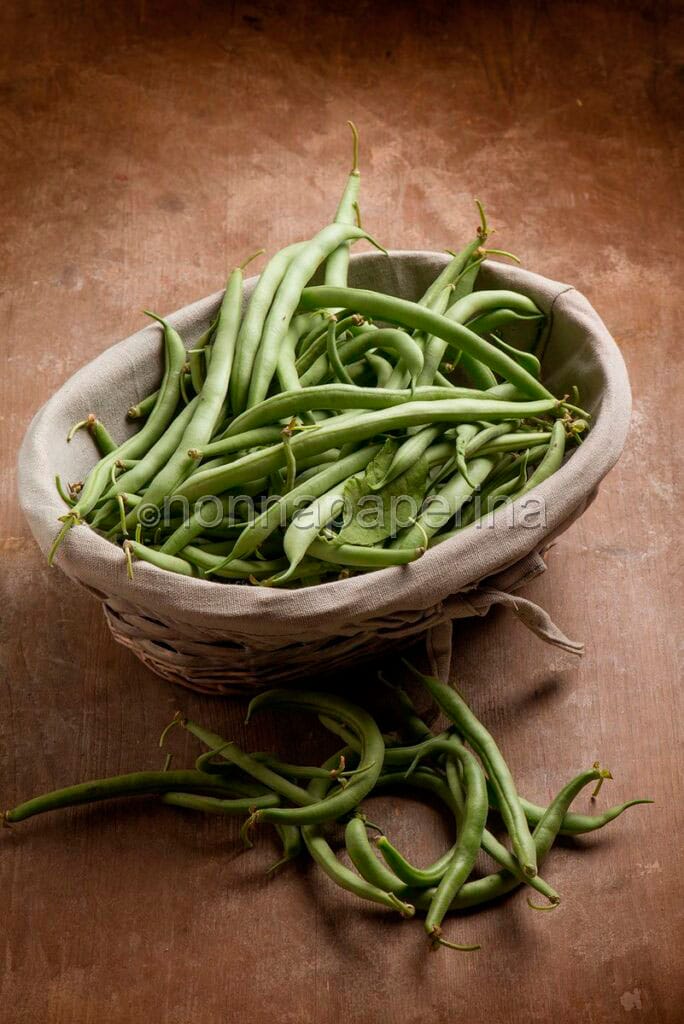
It is imperative to have an ample supply of clean glass jars and bottles with lids or capsules with fresh rubber closures among the required equipment. Glass has actually always been the ideal material for food containers since it is hygienic, doesn’t add flavours or odours to the contents, completely blocks the entry of microorganisms from the outside, and allows you to check that the contents are not affected by any alterations.
Pickled green beans: choosing and sterilising jars
The next step is to select the appropriate size container; the ideal ones have medium-small dimensions (250–500 g), which allow the contents to be devoured as soon as they are opened and prevent unpleasant deterioration while exposed to air (once the jars are opened, they should then be kept in the refrigerator). For juices, fruit syrups, and alcohol, larger jars (750–1000 cl) can be used, while smaller, single-dose ones must be used for sauces and gravies.
In my opinion, preserving jars with a vacuum capsule is the best for jams and preserves; for this type of preparation, those with spring caps and rubber seals are better. In both the first and second cases, the capsules and seals must be changed after each potting. The jars (including capsules) must be carefully cleaned and washed before being used. Furthermore, it is advisable to sterilise the jars in water (with a few drops of vinegar or lemon) for about ten minutes (removing the rubber parts) after washing. The jars must then be carefully dried so that no traces of humidity remain inside, which could trigger fermentation and mould attacks.
They will then be left to air dry perfectly on clean cloths (which do not lose threads or fabric lint), or they will be placed in a warm oven for some time. Before being used, the rubber gaskets should be rinsed in plenty of cold water, then immersed in warm water with a teaspoon of baking soda and rinsed.
Do we have any recipes with green beans? Of course, yes!
COULD IT BE INTERESTING FOR YOU
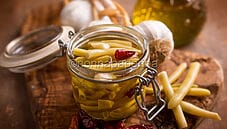
Green beans in oil, a simple but very...
How to use green beans in oil When eaten on their own, green beans in oil make a delicious and flavorful snack that is unmatched. They can be used to make a variety of recipes, and they go well with...
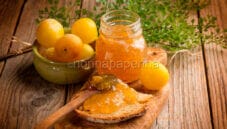
Yellow plum jam, an excellent recipe!
An ingredient to remember Summer's signature fruit, plums, greets us in a multitude of varieties, each possessing distinct qualities in terms of form, colour, and taste. Our palette is enhanced by...

Stuffed dried tomatoes, a tasty, ever-ready appetiser
How to use dried tomatoes In order to prepare the stuffed dried tomatoes, we first cleaned the ripe tomatoes, cut them lengthwise, salted them, and arranged them on the dehydrator racks. The best...



